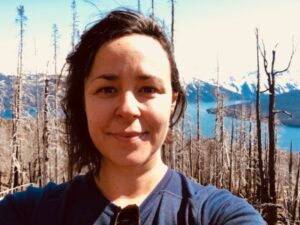Logging Differently for Wildlife

About this presentation
We are hearing more and more about an imminent paradigm shift in forest management in BC. What does that mean, if anything, to our harvest practices? Join the discussion on how industry and government are looking into expanding alternative logging regimes in the north and how this fits into resilience and landscape planning. Critical attention will be given to species at risk management, while we examine specific block-level strategies. Different types of partial cut systems will be presented as management tools, with examples from long term studies at the Date Creek Research Forest about the benefits of partial-cutting to a wide range of values. While pressure is mounting from a timber supply and wildlife habitat perspective, expectations are growing for foresters. Learn how some local players are leading by example.
 About Marie-Lou Lefrancois (RPF, MSC)
About Marie-Lou Lefrancois (RPF, MSC)
Marie-Lou works for BC Timber Sales Headquarters as the Wildlife Resource Specialist for the North Area—a new position created to better reconcile wildlife values and current logging practices. Her background combines forest research and operations. In the first half of her career, she worked for various universities and different levels of government on research projects looking at stand dynamics, climate change, complex systems, and tree growth modelling. In the second half, she transitioned into operational planning, working with industry and government as a professional forester. Working for the provincial government since 2011, including as a planning forester and forest carbon advisor, she is now part of a small group of forest sustainability specialists with BC Timber Sales Headquarters. She finds meaning in planning cutblocks beyond the “clearcut with reserve” regime, and as a result, has tested the system on occasion.
About Erica Lilles (MSC, PAG, Natural Resource Management Researcher, Skeena Region, FLNR)
Erica inherited responsibility for the Date Creek Research Forest three years ago as part of her job for the Skeena Region, and has collaboratively worked to bring together results from 25 years of research on partial-cutting. She tries to cover aspects of four disciplines in her role as a generalist researcher for the Skeena Region: silviculture, ecology, soils and climate change, but not necessarily in that order. She hopes to bring an international and regional perspective to her work, having had forest ecology research experiences in Alberta, the Yukon, interior Alaska, Washington State, New Hampshire, and Costa Rica.

